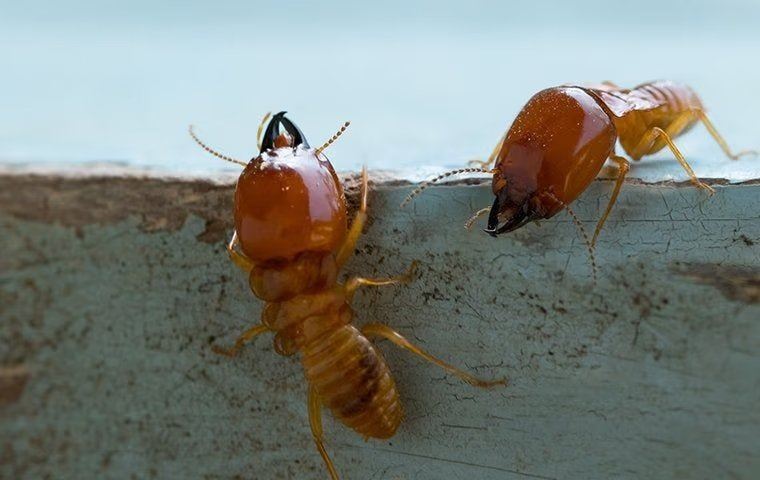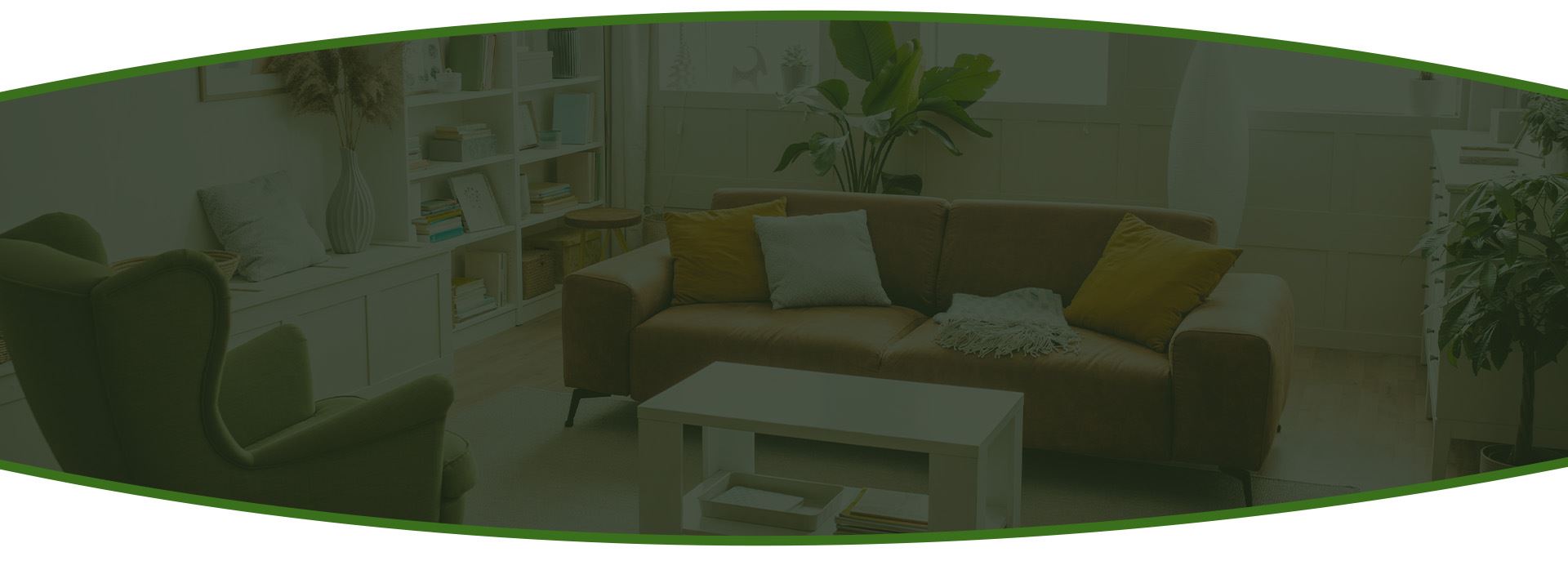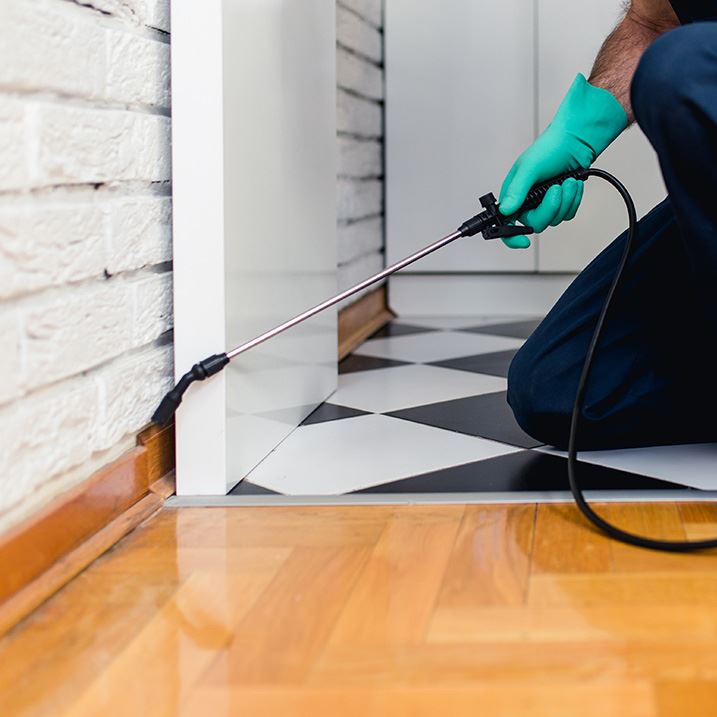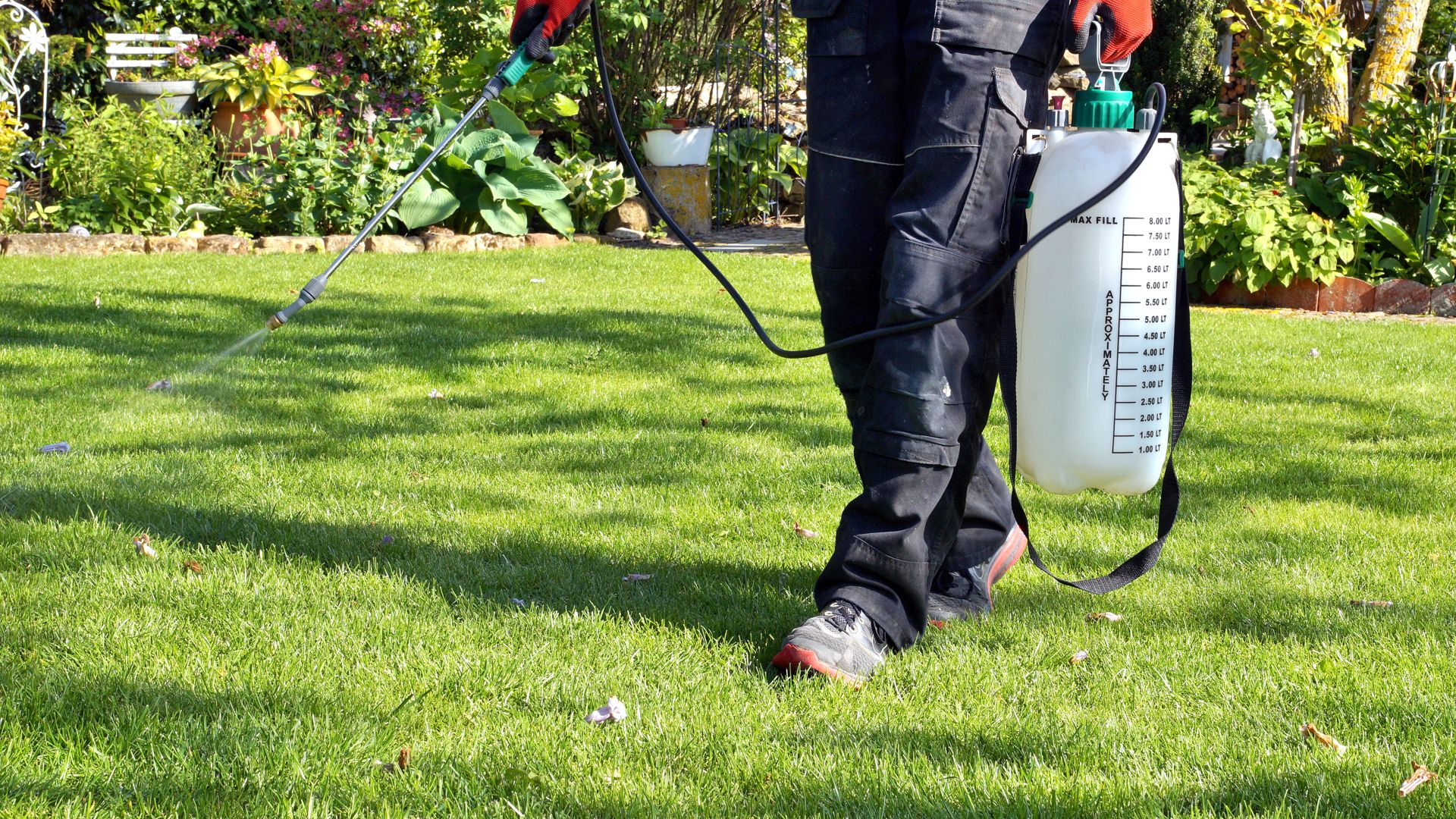Termite Identification Guide
What are termites?

Termites are social insects that live together in large colonies and meet their nutritional needs by consuming wood and other cellulose-based material. In Providence and the greater Rhode Island area, we have to be vigilant about two main types of termites: the subterranean termite and the drywood termite.
Understanding their behaviors is vital for effective prevention and control, especially given the risks to historic and newer properties alike.
Subterranean termites have high moisture requirements and must maintain contact with the soil to survive. They nest underground and travel through damp soil, primarily feeding on decaying or water-damaged wood found in basements, crawl spaces, or wherever moisture accumulates. Their presence often goes unnoticed until extensive damage has occurred, making early identification imperative for any exterminator company in Providence.
Drywood termites, in contrast, prefer to feed on dry wood with minimal moisture content. They do not require soil contact for survival and nest inside the very wood they consume. This means they can infest items such as wooden trim, structural timbers, and even antique furniture, posing a particular challenge for termite exterminators in Providence aiming to protect both homes and businesses from costly damage.
Our Termite Control and Elimination Process
At Encon LLC, we use proven, up-to-date methods to eliminate termite colonies and protect your home from future attacks. Our process is thorough and designed to provide a lasting solution, safeguarding your investment. We treat your property as if it were our own from start to finish.
Our professional termite treatment follows these key steps:
- Comprehensive Termite Inspection: Our trained technician performs a detailed inspection of your property, from the foundation to the attic, to identify evidence of termite activity, locate entry points, and assess any damage.
- Strategic Treatment Plan: Based on the inspection findings and the specific type of termite, we will develop a plan. This typically involves using the latest, most effective products, such as advanced liquid barrier treatments or strategically placed baiting systems.
- Targeted Application: We apply the treatment precisely to create a continuous protective zone around and underneath your home. This process is designed to eliminate the existing colony and prevent other colonies from invading.
- Ongoing Protection: We provide clear documentation of the service performed and offer guidance on how to help prevent future infestations. Our services are backed by our guarantee for your confidence.
This systematic approach ensures we are not just treating the symptoms but are solving the problem at its source.
Are termites dangerous?
The damage that termites cause can be extensive and significantly impact the structural integrity of homes and businesses. Termites are stealthy pests; they travel, nest, and feed invisibly, often remaining undetected for months or even years. This makes regular monitoring by a trusted exterminator company in Providence crucial for early intervention and prevention of severe damage.
Often, a termite infestation is only discovered after structural damage has occurred. Common indicators include small exit holes in wood, doors, or windows that suddenly stick or misalign, spongy or uneven floors, blistering paint, and unexplained wood deterioration. Recognizing these signs early can reduce costs for repairs and the need for extensive remediation by a termite exterminator in Providence. If you are concerned about termites in your Rhode Island property, it is always best to act proactively and work with a local exterminator company to protect your investment and your peace of mind.

Take a look at some our our recent reviews from people in your area!
-
“Very friendly!”
“Deb in the office is very responsive and organized. Bobby the technician is very friendly and knowledgeable. Ron the owner has a great personality and is a great “pest detective”. Highly recommend!”- Lynn L. -
“Fantastic experience!”
“I moved into an old house recently and had typical pest problems. Called Encon and scheduled an appointment a couple of days later. Everything was completed in about an hour. Highly recommend them to anyone.”- Kevin Y. -
“Would highly recommend!”
“Have them at 2 of my properties and I can assure you that they will find the problem and correct it and will come back as many times as they need to to make sure it's taken care of, entire staff has been excellent to deal with and all very knowledgeable.”- Walter S. -
“We absolutely love Encon!”
“Every single guy who has come to our house has been extremely knowledgeable and superrrr friendly!”- Christopher G. -
“Amazing customer service, caring, professional service! Very pleased with Encon!!”- Whitney R.
-
“Informational & professional!”
“I had Ryan Thivierge come to my house today to inspect for mice and cover the holes up. He was on time, very courteous, informational, & professional. I would definitely recommend him & your company to my friends!”- Tracey M. -
“Good guys!”
“Jason came and made sure I didn’t have mice and he did as so! It made me feel wayyyy better because I was ready to throw furniture out and he assured me I was all set, he’s even coming back to check on things in about two weeks! Good guy, thank”- Justice R. -
“Thrilled with our experience”
“This is the perfect service for new homeowners. Dennis talked us through all the things we need to do regularly to stay on top of our home to keep it safe and pest-free. Learned a lot, felt very confident in the service we were given, and enjoyed chatting ”- Lexi A.
-
Licensed & Trained TechniciansOur team employs the latest techniques and technologies to effectively address any pest infestation in your home or business.
-
Local, Family-Owned & Operated
Trust in a local, family-owned, and operated business dedicated to serving communities throughout Rhode Island and Massachusetts.
-
Competitive Pricing & Customized PlansWe offer tailored plans for your home or business that are designed to fit your budget while maintaining high-quality services.
-
30+ Years of Industry ExperienceWith years of professional experience, our pest control company guarantees expertise in every service we provide.
How do I get rid of termites?
If you’re dealing with termites in Providence, working with licensed professionals like our team at Encon LLC is the most effective route to eradicate active colonies and prevent future damage. DIY treatments rarely address the root of a termite issue, particularly with hidden infestations common in crawl spaces, attics, or behind walls—areas typical of older Providence homes.
As a reliable exterminator company in Providence, we use proven inspection methods to identify early and advanced signs of termite activity, ensuring that no areas of concern go unchecked. Our termite exterminator services in Providence include customized treatment plans that take into consideration the unique challenges of each property, whether you own a historic residence or a modern business facility. Ongoing monitoring and follow-up help maintain a termite-free environment, delivering lasting protection for property owners long after initial treatment.
Trust your termite removal needs to the professionals at Encon. We treat our customers like family and unite as a team to meet your pest control needs in Providence and the surrounding areas. Understanding how destructive termites can be, we collaborate with you throughout the process to ensure comprehensive termite removal, minimizing the risk of re-infestation. Our clear communication, friendly service, and commitment to long-term results make us the preferred choice for termite exterminator services in Providence.
How can I prevent termites in the future?



Encon LLC's Blog
-
 Everything You Need To Know About Ants In ProvidenceRead More
Everything You Need To Know About Ants In ProvidenceRead More -
 Humane And Effective Wildlife Control For Rhode Island Properties | Encon LLCRead More
Humane And Effective Wildlife Control For Rhode Island Properties | Encon LLCRead More -
 How To Keep Mice Out Of Your Worcester HomeRead More
How To Keep Mice Out Of Your Worcester HomeRead More -
 How To Keep Ants Out Of Your Providence HomeRead More
How To Keep Ants Out Of Your Providence HomeRead More -
 Worcester Property Owners Complete Guide To Effective Rodent ControlRead More
Worcester Property Owners Complete Guide To Effective Rodent ControlRead More -
 The Trick To Getting Rid Of Bed Bugs In Worcester HomesRead More
The Trick To Getting Rid Of Bed Bugs In Worcester HomesRead More -
 You Need More Than Repellent To Deal With Mosquitoes In WorcesterRead More
You Need More Than Repellent To Deal With Mosquitoes In WorcesterRead More -
 How To Keep The Roof Rats In Worcester At BayRead More
How To Keep The Roof Rats In Worcester At BayRead More -
 Time To Rodent-Proof Your Providence Home For The WinterRead More
Time To Rodent-Proof Your Providence Home For The WinterRead More -
 Pest Spotlight: How To Get Rid Of Ticks In WorcesterRead More
Pest Spotlight: How To Get Rid Of Ticks In WorcesterRead More -
 Roach Removal 101: What It Takes To Eliminate An Infestation In Your Providence HomeRead More
Roach Removal 101: What It Takes To Eliminate An Infestation In Your Providence HomeRead More -
 How To Get Rid Of Bed Bugs In Your Worcester HomeRead More
How To Get Rid Of Bed Bugs In Your Worcester HomeRead More -
 The Simple Yet Effective Removal Of A House Ant InfestationRead More
The Simple Yet Effective Removal Of A House Ant InfestationRead More -
 Help! Cockroaches Are Taking Over My Providence HomeRead More
Help! Cockroaches Are Taking Over My Providence HomeRead More -
 Conquering Pantry Pests: Tips And Techniques For A Bug-Free Kitchen In ProvidenceRead More
Conquering Pantry Pests: Tips And Techniques For A Bug-Free Kitchen In ProvidenceRead More -
 Everything Worcester Residents Should Know About Mosquito ControlRead More
Everything Worcester Residents Should Know About Mosquito ControlRead More -
 Tick Talk: Effective Prevention And Control Strategies For Your Providence PropertyRead More
Tick Talk: Effective Prevention And Control Strategies For Your Providence PropertyRead More -
 What To Do About The Mice Roaming Around Your Providence PropertyRead More
What To Do About The Mice Roaming Around Your Providence PropertyRead More -
 Tips And Tricks To Keeping Bed Bugs Away From Your Worcester HomeRead More
Tips And Tricks To Keeping Bed Bugs Away From Your Worcester HomeRead More -
 Worcester's Rodents Can Be Very Tricky To Tackle AloneRead More
Worcester's Rodents Can Be Very Tricky To Tackle AloneRead More -
 How To Remove Carpenter Bees From My Worcester PropertyRead More
How To Remove Carpenter Bees From My Worcester PropertyRead More -
 Why Mice Invade Worcester HomesRead More
Why Mice Invade Worcester HomesRead More -
 Pest Spotlight: How To Combat Cockroaches In ProvidenceRead More
Pest Spotlight: How To Combat Cockroaches In ProvidenceRead More -
 Bed Bug Control In Providence: Essential Steps For EliminationRead More
Bed Bug Control In Providence: Essential Steps For EliminationRead More -
 Bed Bug-Proofing Your Luggage: Travel Tips for Pest-Free Journeys To And From ProvidenceRead More
Bed Bug-Proofing Your Luggage: Travel Tips for Pest-Free Journeys To And From ProvidenceRead More -
 Everything You Should Know About Termite Control In ProvidenceRead More
Everything You Should Know About Termite Control In ProvidenceRead More -
 The Ultimate Termite Control Guide For Providence HomeownersRead More
The Ultimate Termite Control Guide For Providence HomeownersRead More -
 How To Keep Ants Away From Your Worcester HomeRead More
How To Keep Ants Away From Your Worcester HomeRead More

Reach out for immediate pest control solutions in Rhode Island, Massachusetts & Connecticut! Our team of dedicated professionals is ready to promptly address any pest-related concerns you may have, ensuring an effective resolution to restore comfort and peace of mind to your home or business.
Reach out for immediate pest control solutions in Rhode Island, Massachusetts & Connecticut! Our team of dedicated professionals is ready to promptly address any pest-related concerns you may have, ensuring an effective resolution to restore comfort and peace of mind to your home or business.



























